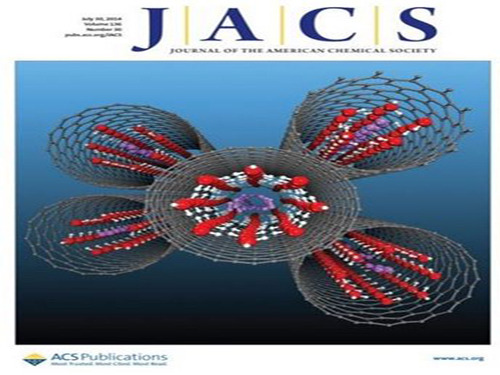
Recently, Professor Zeng Xiaocheng of the University of Science and Technology of China (Graduate of Thousand Talent Plan B, Professor of Ameritas University, University of Nebraska, USA) and Joseph S of Purdue University. In collaboration with Francisco Professor (American Academy of Sciences, Academician of the American Academy of Arts and Sciences, and former President of the American Chemical Society), through theoretical studies, it was found that hydrogen molecules can form low-dimensional hydrogen hydrates in carbon nanotubes at room temperature, making use of carbon nanotubes clean, Safe storage of hydrogen becomes possible. The results were published on the July 30 issue of the American Chemical Society and were selected as cover and hot topics.
Gas hydrates are non-stoichiometric cage-like crystals formed by water and small molecules, also known as cage hydrates. Hydrate crystals are an efficient molecular level gas reservoir that can store 160-180 m3 of natural gas per cubic meter of hydrate. The common gas hydrate is methane hydrate (commonly known as flammable ice) and is an important follow-up energy source. Due to the very small diameter of hydrogen molecules, it is necessary to generate stable hydrates at high pressure or in the presence of hydrate promoters. Based on previous research work on low-dimensional ice and gas hydrates, the researchers proposed a new idea for putting hydrogen molecules into one-dimensional carbon nanotubes. The theory predicts the formation of low-dimensional hydrogen hydrates at normal temperature and pressure. It was found that unlike gas phase molecules enveloped by water molecules in the bulk hydrates, hydrogen molecules in one-dimensional hydrogen hydrates form quasi-one-dimensional molecular chains enveloped in one-dimensional ice nanotubes. Especially in octagonal ice nanotubes, hydrogen molecular chains can flow freely in the axial direction like liquids.
This research work is expected to have a significant impact on the clean and safe storage of hydrogen. The co-first authors of the thesis were Zhao Wenhui, a postdoctoral fellow of the China University of Science and Technology, Wang Lu, a research associate and associate professor, and Jaeil Bai, an assistant professor of research at the University of Nebraska-Lincoln.
The above research was funded by the Chinese Academy of Sciences, the National Natural Science Foundation of China, the Ministry of Education, and the National Thousand Talents Program.
Polypropylene is a thermoplastic polymer used in a wide range of applications among which we usually use it to make pharmaceutical packaging products. Each time when we receive the original Polypropylene materials we have ordered, we will do a series of modifications on them to form some useful pellets that will used in our products. One kind of these reproduced particles will be used to make caps for pharmaceutical ampoule bottles. We now have a big stable customer base in our domestic market. In future, we will do our best to serve the worldwide clients. If you are looking for a cooperator in our country, maybe we are a good choice for you. Warmly wait for your inquires!
Pp Resin For Plastic Ampoule,Resin For Bottle,Modified Polypropylene Granules,Medical Ampoule Bottle
SUZHOU CRH PHARMACEUTICAL TECHNOLOGY CO.,LTD , https://www.crh-health.com